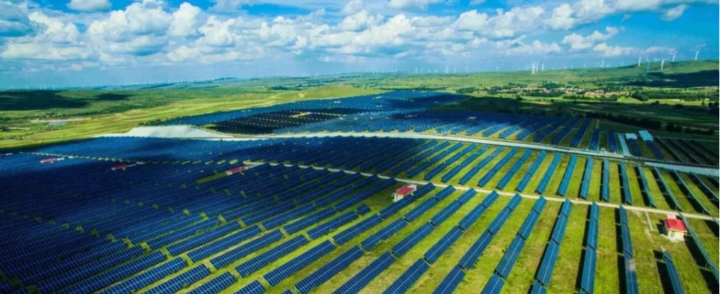Innovate and reshape the new energy pattern of the 14th five year plan
The National Energy Administration recently revealed that by the end of May this year, the total installed capacity of renewable energy power generation in China had reached 1.1 billion kw, an increase of 15.1% year-on-year; Among them, the installed capacity of new energy power generation such as wind power, photovoltaic power generation and biomass power generation exceeded 700million kW. From January to may, the new installed capacity of renewable energy power generation nationwide was 43.49 million KW, accounting for 82.1% of the new installed capacity of power generation nationwide, and has become the main body of the new installed capacity of power generation in China.
With the gradual establishment and improvement of China’s “1+n” policy system of carbon peak and carbon neutralization, the development of clean energy such as wind power, photovoltaic power generation and hydrogen energy has been accelerating, and innovative business forms of Industrial Synergy and integrated development are also emerging. Since the beginning of this year, the 14th five year plan of local energy issued by all regions has focused on new energy and hydrogen energy, and put forward the requirements of technological innovation and model innovation. Various signs show that the era of wind, light, hydrogen and storage is coming, and will reshape the energy development pattern in innovation.
The wheel of time is slowly driving on the rugged “lane” of the 14th five year plan. In the international environment where the haze of the global epidemic has not completely dissipated and the energy supply crisis caused by geopolitical conflicts such as the situation between Russia and Ukraine has become prominent, the development and transformation of domestic energy are facing a major test. In this context, with the in-depth promotion of energy reform, a series of new trends in the field of new energy in China are coming one after another, laying the foundation for the realization of the “double carbon” goal.
Since the 14th five year plan, wind power and photovoltaic power at the beginning of the “post parity era” are supporting the “high-quality leap forward development” with continuous technological breakthroughs. As the construction of large-scale wind power photovoltaic bases has become the main driving force for the growth of new energy, photovoltaic products and solutions tailored to the special climatic environment in desert and Gobi regions are emerging in endlessly. In terms of wind power, the “online” of the single megawatt onshore wind power base and the far-reaching exploration of offshore wind power development have injected new impetus into the “simultaneous development of onshore and offshore”.
Since the 14th five year plan, the trend of digital and intelligent superposition of new energy has also gradually accelerated. Recently, Longji sunflower, a well-designed solution for household distributed groups, was launched, trying to open up the “blocking point” of household photovoltaic development with an open, convenient and reliable systematic platform. Subsequently, the ABC black hole series components of saineng digital energy were officially unveiled to realize the visual management of energy flow and carbon flow through the cloud edge end integrated architecture and AI energy scheduling algorithm; With safe energy storage system and digital operation and maintenance, saineng’s integrated solution of source, network, load and storage can effectively solve the problems of energy waste, low power generation efficiency and low yield caused by the mismatch of energy flow and information flow between distributed new energy power generation end and consumer end.
Since the 14th five year plan, the development of hydrogen energy industry has accelerated and stepped into the fast lane, the industrial chain has been gradually improved, the gap with the international advanced level has been gradually narrowed, the industrial scale has increased rapidly, and the application scenarios have been further expanded. Especially in the field of transportation, as the leader of the development of hydrogen energy industry, the layout is relatively fast. By the end of 2021, the country has nearly 9000 fuel cell vehicles, and the total number of hydrogen refueling stations has exceeded 250, ranking first in the world. The application of hydrogen in many fields such as industry, construction and distributed energy is also accelerating. During this year’s Beijing Winter Olympics, the hydrogen fuel torch and the appearance of more than 1000 hydrogen energy vehicles sounded the horn for the arrival of the hydrogen energy era.
Click here for more information


